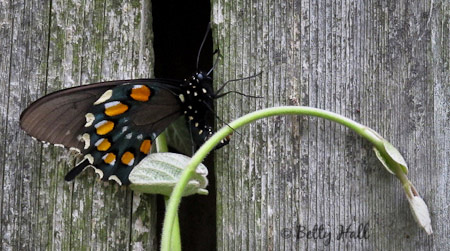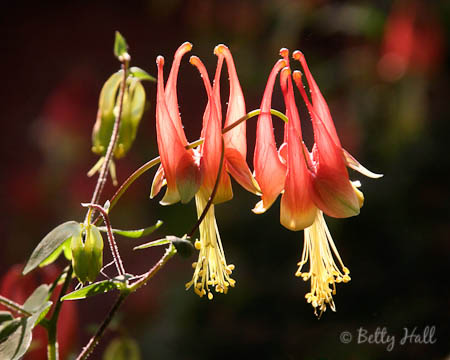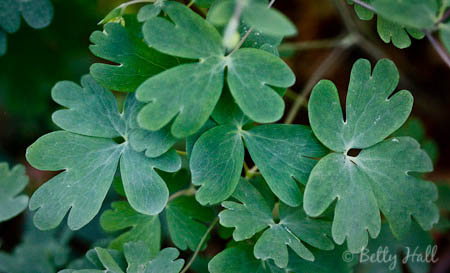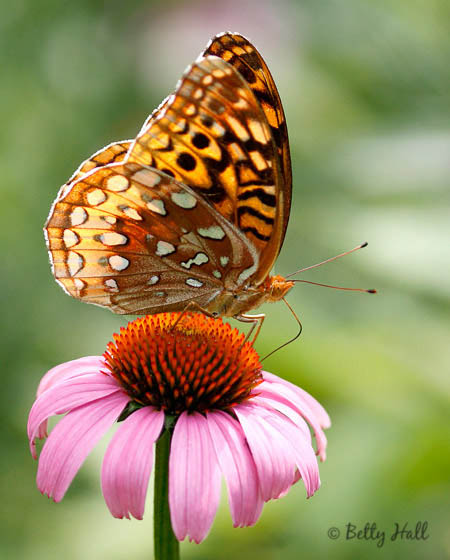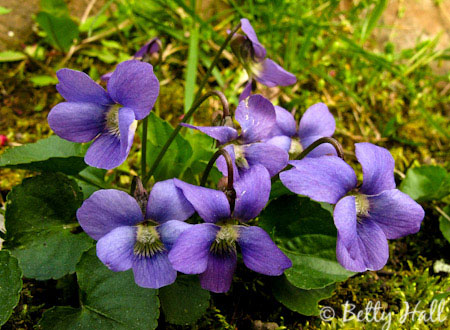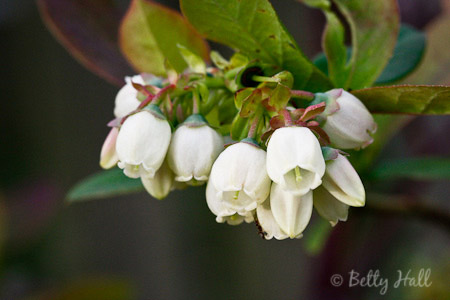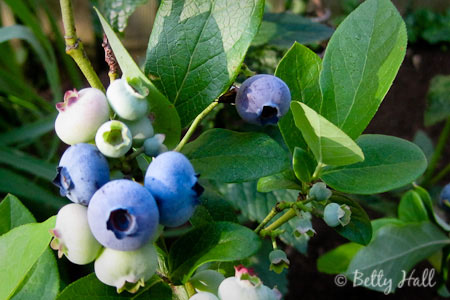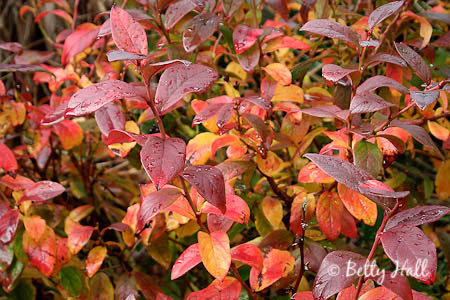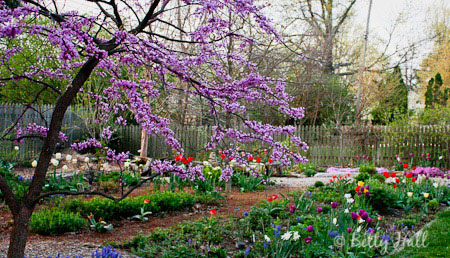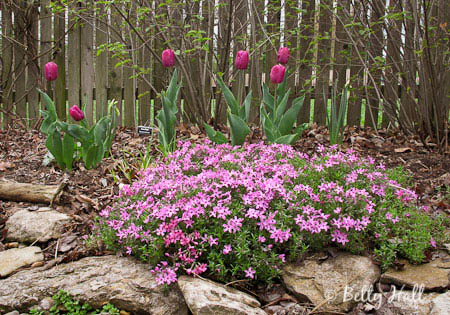While wandering in the backyard last week with my camera, I was excited to see this Pipevine Swallowtail butterfly (Battus philenor) laying eggs on the Pipevine (Aristolochia macrophylla).
I went back later to find she had laid eggs in at least two places. As I was photographing these eggs, I saw a tiny insect crawling toward them.
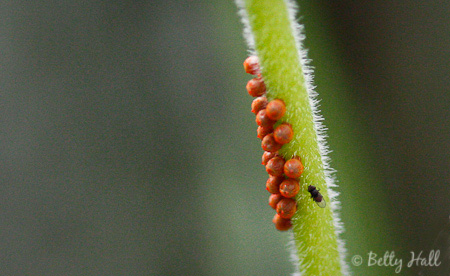
In the past, butterfly eggs I’ve seen have mysteriously disappeared overnight. Eggs and caterpillars are tasty food for birds and other insects. I’ve read that no more than one out of a hundred eggs survives to become an adult.
I’d like to increase the chances for this batch of eggs, so I brought them inside. When the caterpillars emerge I’ll put some of them back on the Pipevine and raise the rest to adults.
I’m delighted my 2011 backyard butterfly adventures have begun and I’ll keep you posted on developments.

